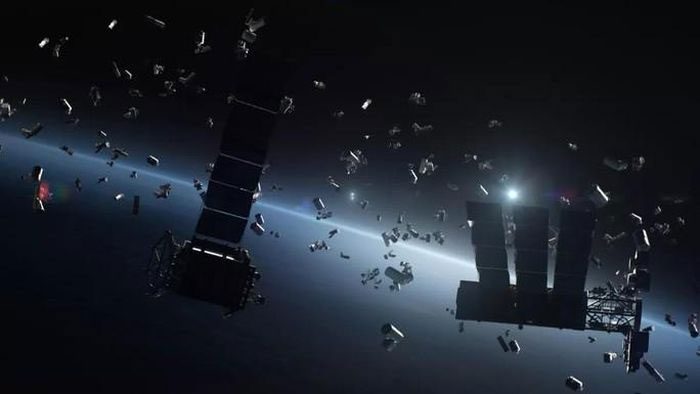After 30 years in a stable orbit at an altitude of 1,400 km above Earth, a Soviet Kosmos satellite has broken into 7 pieces.
Dr. Jonathan McDowell, a space debris expert at the Harvard-Smithsonian Center for Astrophysics, confirmed that the 7 debris objects in Earth’s orbit are remnants of a defunct Soviet satellite launched into space in 1991.
“The debris may have originated from Kosmos-2143 or Kosmos-2145, two of the 7 Strela-1M satellites launched on the same rocket,” Dr. McDowell stated.

Spacecraft in orbit flying through a region filled with “obstacles” – (Photo: Evgeniy Shkolenko).
This satellite was a small spacecraft that is no longer operational, so this incident does not pose a significant loss for any space agency. However, the fragmentation of this satellite serves as a warning about the increasing risk of space collisions in orbit. Additionally, the debris from this satellite breakup could further contribute to the risk of space collisions.
The aging satellite systems of many countries, left over the past 60 years, have made the space around Earth increasingly hazardous.
Recently, the three major space agencies in the world—NASA from the United States, ESA from Europe, and Roscosmos from Russia—have estimated that the number of large debris objects in orbit has surpassed 1 million. These agencies are working diligently to find solutions to remove space junk.
The debris is believed to be the cause of Roscosmos losing two Soyuz and Progress spacecraft in just a few months between late 2022 and 2023, as the debris punctured these vessels.
On August 24, the International Space Station (ISS) had to fire its thrusters for over 21 seconds to change position in order to avoid an incoming piece of debris.
Previously, on March 8, the Russian Progress 83 spacecraft, which was docked with the ISS for a supply mission, also had to fire its thrusters for 6 minutes to save the station from another piece of debris.


















































